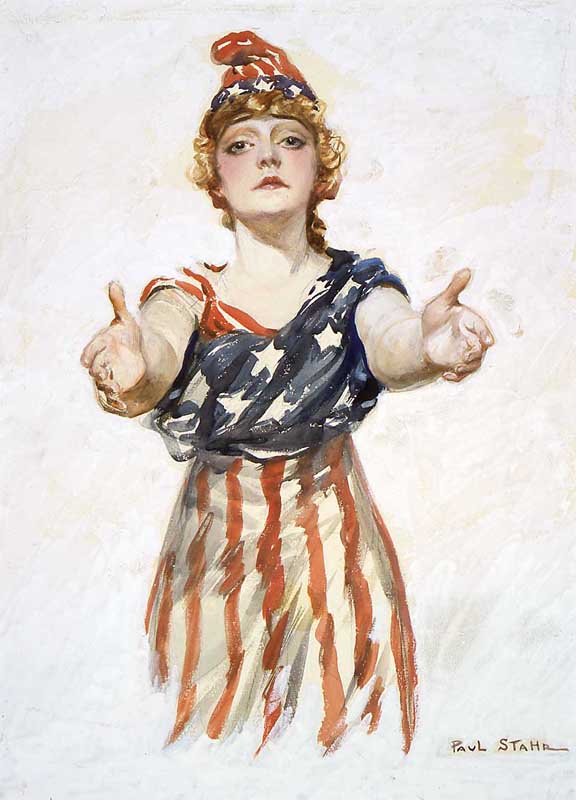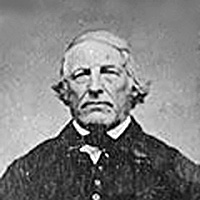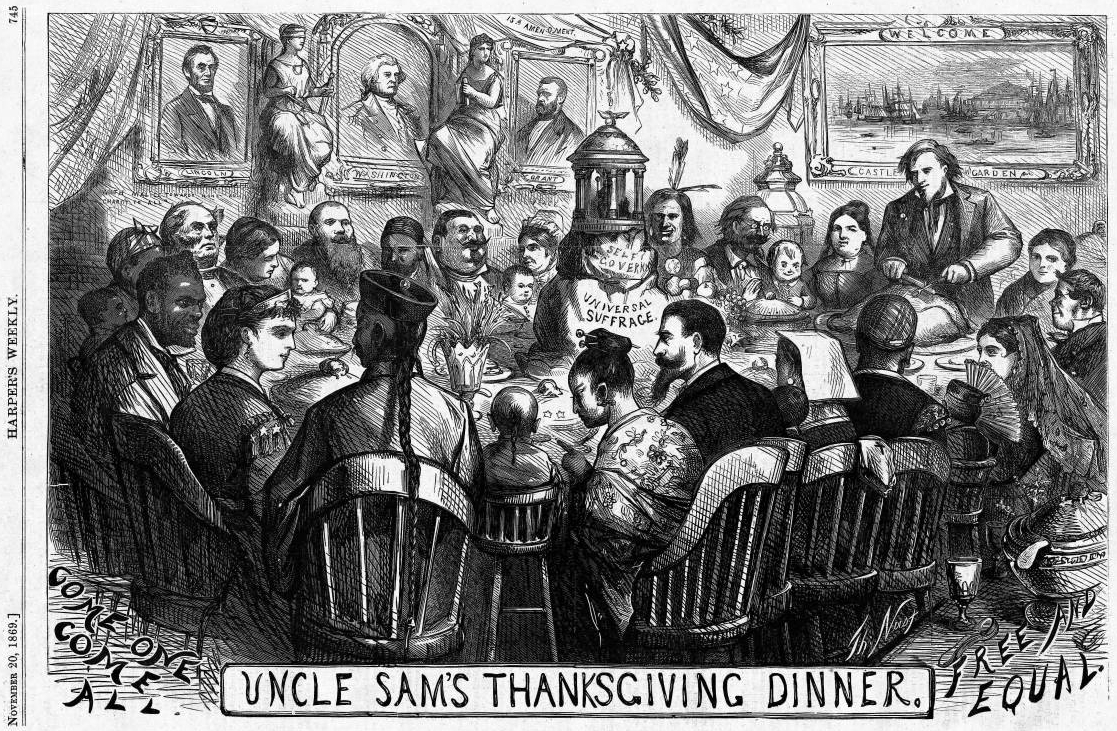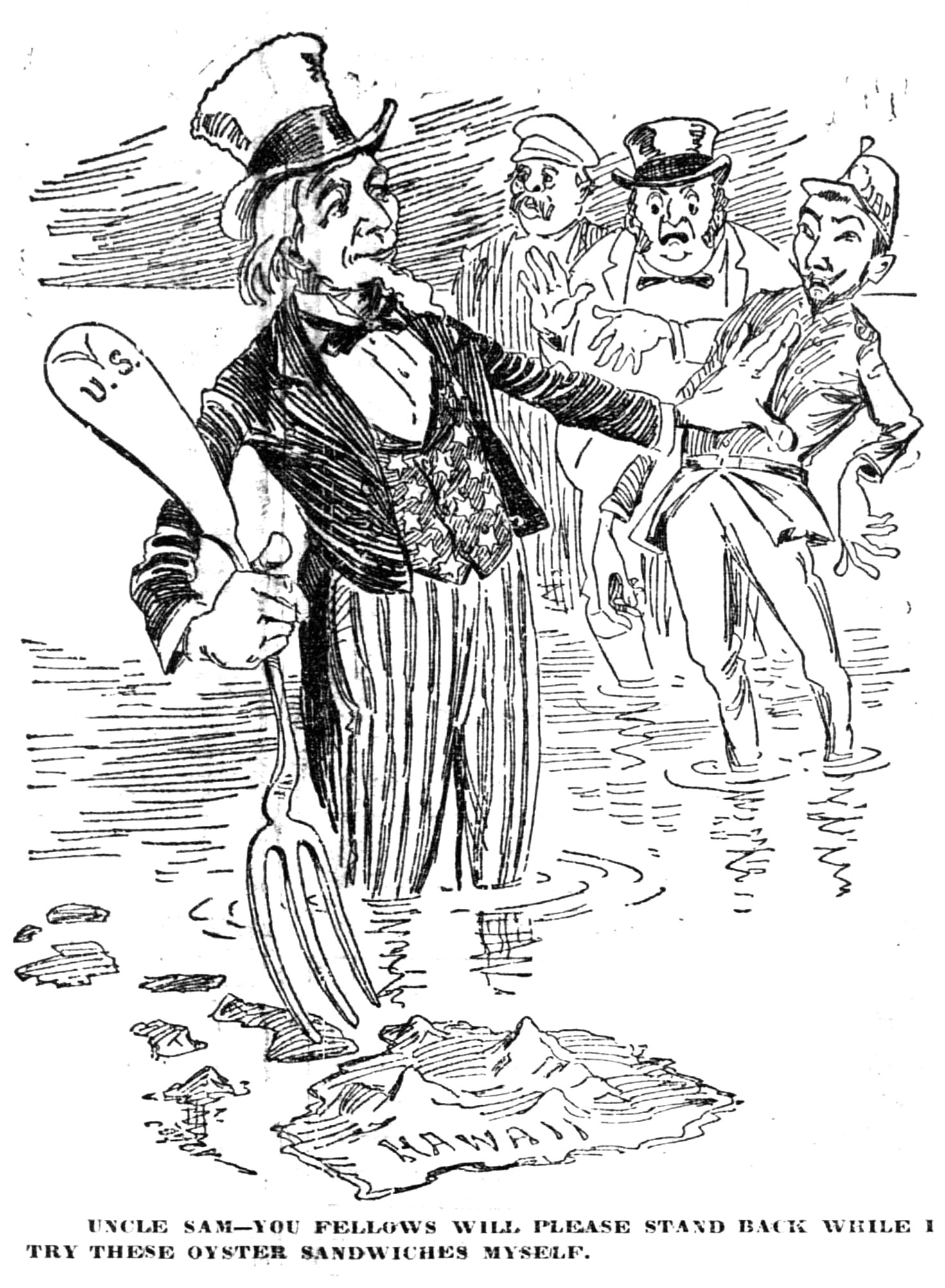Uncle Sam on:
[Wikipedia]
[Google]
[Amazon]
 Uncle Sam (which has the same initials as ''
Uncle Sam (which has the same initials as ''
Google Books
While the figure of Uncle Sam specifically represents the
 The earliest known personification of the United States was as a woman named
The earliest known personification of the United States was as a woman named





 An 1810 edition of '' Niles' Weekly Register'' has a footnote defining Uncle Sam as "a cant term in the
An 1810 edition of '' Niles' Weekly Register'' has a footnote defining Uncle Sam as "a cant term in the
online
* Gerson, Thomas I
''The Story of Uncle Sam: Godfather of America''
(March 1959) West Sand Lake, NY: "Uncle Sam" Enterprises, Inc. * Mouraux, Cecile, and Jean-Pierre Mouraux
''Who Was "Uncle Sam": Illustrated Story of the Life of Our National Symbol''.
Sonoma, CA: Poster Collector (2006). * Jacques, George W
''The Life and Times of Uncle Sam''
(2007). Troy, NY: IBT Global. . * Palczewski, Catherine H. "The male Madonna and the feminine Uncle Sam: Visual argument, icons, and ideographs in 1909 anti-woman suffrage postcards." ''Quarterly Journal of Speech'' 91.4 (2005): 365-394
online
* Wilde, Lukas RA, and Shane Denson. "Historicizing and Theorizing Pre-Narrative Figures—Who is Uncle Sam?." ''Narrative'' 30.2 (2022): 152-168
online
* A collection of reviews of the book "Who Was Uncle Sam" by Jean-Pierre and Cecile Moreaux.
* ttp://www.sonofthesouth.net/uncle-sam/uncle-sam-pictures.htm Historical Uncle Sam pictures*
What's the origin of Uncle Sam?
The Straight Dope
Uncle Sam online
links to 550 books {{Authority control American culture Fictional American people Legendary American people National symbols of the United States National personifications Holiday characters
 Uncle Sam (which has the same initials as ''
Uncle Sam (which has the same initials as ''United States
The United States of America (U.S.A. or USA), commonly known as the United States (U.S. or US) or America, is a country primarily located in North America. It consists of 50 U.S. state, states, a Washington, D.C., federal district, five ma ...
'') is a common national personification of the federal government of the United States
The federal government of the United States (U.S. federal government or U.S. government) is the national government of the United States, a federal republic located primarily in North America, composed of 50 states, a city within a fede ...
or the country in general. Since the early 19th century, Uncle Sam has been a popular symbol of the U.S. government in American culture and a manifestation of patriotic emotion. Uncle Sam has also developed notoriety for his appearance in military propaganda
Propaganda is communication that is primarily used to influence or persuade an audience to further an agenda, which may not be objective and may be selectively presenting facts to encourage a particular synthesis or perception, or using loa ...
, popularized by a famous 1917 World War I
World War I (28 July 1914 11 November 1918), often abbreviated as WWI, was List of wars and anthropogenic disasters by death toll, one of the deadliest global conflicts in history. Belligerents included much of Europe, the Russian Empire, ...
recruiting poster by J.M. Flagg.
According to legend, the character came into use during the War of 1812
The War of 1812 (18 June 1812 – 17 February 1815) was fought by the United States of America and its indigenous allies against the United Kingdom and its allies in British North America, with limited participation by Spain in Florida. It ...
and may have been named for Samuel Wilson. The actual origin is obscure. The first reference to Uncle Sam in formal literature (as distinct from newspapers) was in the 1816 allegorical book '' The Adventures of Uncle Sam, in Search After His Lost Honor'' by Frederick Augustus Fidfaddy
''The Adventures of Uncle Sam, in Search After his Lost Honor'' is an allegorical book published in 1816 written by Frederick Augustus Fidfaddy. The book was written in English and contains 162 pages. It was republished in 1971 by Liberty House, a ...
, Esq.pp. 40–41 of Albert Matthews, "Uncle Sam". ''Proceedings of the American Antiquarian Society'', v.19, 1908. pp. 21–65Google Books
While the figure of Uncle Sam specifically represents the
government
A government is the system or group of people governing an organized community, generally a state.
In the case of its broad associative definition, government normally consists of legislature, executive, and judiciary. Government ...
, the female figure of Columbia
Columbia may refer to:
* Columbia (personification), the historical female national personification of the United States, and a poetic name for America
Places North America Natural features
* Columbia Plateau, a geologic and geographic region in ...
represents the United States as a nation. An archaic character, Brother Jonathan
Brother Jonathan is the personification of New England. He was also used as an emblem of the U.S. in general, and can be an allegory of capitalism. His too-short pants, too-tight waistcoat and old-fashioned style reflect his taste for inexpensi ...
, was known to represent the American populace.Earlier personifications
 The earliest known personification of the United States was as a woman named
The earliest known personification of the United States was as a woman named Columbia
Columbia may refer to:
* Columbia (personification), the historical female national personification of the United States, and a poetic name for America
Places North America Natural features
* Columbia Plateau, a geologic and geographic region in ...
, who first appeared in 1738 ( pre-US) and sometimes was associated with another female personification, Lady Liberty.
With the American Revolutionary War
The American Revolutionary War (April 19, 1775 – September 3, 1783), also known as the Revolutionary War or American War of Independence, was a major war of the American Revolution. Widely considered as the war that secured the independence of ...
of 1775 came Brother Jonathan
Brother Jonathan is the personification of New England. He was also used as an emblem of the U.S. in general, and can be an allegory of capitalism. His too-short pants, too-tight waistcoat and old-fashioned style reflect his taste for inexpensi ...
, a male personification.
Uncle Sam finally appeared after the War of 1812
The War of 1812 (18 June 1812 – 17 February 1815) was fought by the United States of America and its indigenous allies against the United Kingdom and its allies in British North America, with limited participation by Spain in Florida. It ...
. Columbia
Columbia may refer to:
* Columbia (personification), the historical female national personification of the United States, and a poetic name for America
Places North America Natural features
* Columbia Plateau, a geologic and geographic region in ...
appeared with either Brother Jonathan
Brother Jonathan is the personification of New England. He was also used as an emblem of the U.S. in general, and can be an allegory of capitalism. His too-short pants, too-tight waistcoat and old-fashioned style reflect his taste for inexpensi ...
or Uncle Sam, but her use declined as a national person in favor of Liberty, and she was effectively abandoned once she became the mascot of Columbia Pictures
Columbia Pictures Industries, Inc. is an American film production studio that is a member of the Sony Pictures Motion Picture Group, a division of Sony Pictures Entertainment, which is one of the Big Five studios and a subsidiary of the multi ...
in the 1920s.
A March 24, 1810, journal entry by Isaac Mayo (a midshipman in the US Navy
The United States Navy (USN) is the maritime service branch of the United States Armed Forces and one of the eight uniformed services of the United States. It is the largest and most powerful navy in the world, with the estimated tonnage ...
) states:
weighed anchor stood down the harbor, passed Sandy Hook, where there are two light-houses, and put to sea, first and the second day out most deadly seasick, oh could I have got onshore in the hight 'sic''of it, I swear that uncle Sam, as they call him, would certainly forever have lost the services of at least one sailor.
Evolution




 An 1810 edition of '' Niles' Weekly Register'' has a footnote defining Uncle Sam as "a cant term in the
An 1810 edition of '' Niles' Weekly Register'' has a footnote defining Uncle Sam as "a cant term in the army
An army (from Old French ''armee'', itself derived from the Latin verb ''armāre'', meaning "to arm", and related to the Latin noun ''arma'', meaning "arms" or "weapons"), ground force or land force is a fighting force that fights primarily on ...
for the United States
The United States of America (U.S.A. or USA), commonly known as the United States (U.S. or US) or America, is a country primarily located in North America. It consists of 50 U.S. state, states, a Washington, D.C., federal district, five ma ...
." Presumably, it came from the abbreviation of the United States: U.S.
Samuel Wilson legend
The precise origin of the Uncle Sam character is unclear, but a popular legend is that the name "Uncle Sam" was derived from Samuel Wilson, a meatpacker from Troy, New York, who supplied rations for American soldiers during the War of 1812. There was a requirement at the time for contractors to stamp their name and where the rations came from onto the food they were sending. Wilson's packages were labeled "E.A.—U.S." When someone asked what that stood for, a co-worker jokingly said, "Elbert Andersonhe contractor
He or HE may refer to:
Language
* He (pronoun), an English pronoun
* He (kana), the romanization of the Japanese kana へ
* He (letter), the fifth letter of many Semitic alphabets
* He (Cyrillic), a letter of the Cyrillic script called ''He'' in ...
and Uncle Sam," referring to Wilson, though the ''U.S.'' actually stood for "United States".
Doubts have been raised as to the authenticity of this story, as the claim did not appear in print until 1842. Additionally, the earliest known mention definitely referring to the metaphorical Uncle Sam is from 1810, predating Wilson's contract with the government.
Development of the character
In 1835,Brother Jonathan
Brother Jonathan is the personification of New England. He was also used as an emblem of the U.S. in general, and can be an allegory of capitalism. His too-short pants, too-tight waistcoat and old-fashioned style reflect his taste for inexpensi ...
made a reference to Uncle Sam, implying that they symbolized different things: Brother Jonathan was the country itself, while Uncle Sam was the government and its power.
A clockmaker in an 1849 comedic novel explains "we call...the American public Uncle Sam, as you call the British John Bull."
By the 1850s, the names Brother Jonathan
Brother Jonathan is the personification of New England. He was also used as an emblem of the U.S. in general, and can be an allegory of capitalism. His too-short pants, too-tight waistcoat and old-fashioned style reflect his taste for inexpensi ...
and Uncle Sam were being used nearly interchangeably, to the point that images of what had previously been called "Brother Jonathan" were being called "Uncle Sam". Similarly, the appearance of both personifications varied wildly. For example, one depiction of Uncle Sam in 1860 showed him looking like Benjamin Franklin
Benjamin Franklin ( April 17, 1790) was an American polymath who was active as a writer, scientist, inventor
An invention is a unique or novel device, method, composition, idea or process. An invention may be an improvement upon a m ...
, while a contemporaneous depiction of Brother Jonathan
Brother Jonathan is the personification of New England. He was also used as an emblem of the U.S. in general, and can be an allegory of capitalism. His too-short pants, too-tight waistcoat and old-fashioned style reflect his taste for inexpensi ...
looks more like the modern version of Uncle Sam, though without a goatee
A goatee is a style of facial hair incorporating hair on one's chin but not the cheeks. The exact nature of the style has varied according to time and culture.
Description
Until the late 20th century, the term ''goatee'' was used to refer sol ...
.
An 1893 article in ''The Lutheran Witness
Concordia Publishing House (CPH), founded in 1869, is the official publishing arm of the Lutheran Church–Missouri Synod (LCMS). Headquartered in St Louis, Missouri, at 3558 S. Jefferson Avenue, CPH publishes the synod's official monthly magaz ...
'' claims Uncle Sam was simply another name for Brother Jonathan
Brother Jonathan is the personification of New England. He was also used as an emblem of the U.S. in general, and can be an allegory of capitalism. His too-short pants, too-tight waistcoat and old-fashioned style reflect his taste for inexpensi ...
:When we meet him in politics we call him Uncle Sam; when we meet him in society we call himUncle Sam did not get a standard appearance, even with the effective abandonment of Brother Jonathan near the end of theBrother Jonathan Brother Jonathan is the personification of New England. He was also used as an emblem of the U.S. in general, and can be an allegory of capitalism. His too-short pants, too-tight waistcoat and old-fashioned style reflect his taste for inexpensi .... Here of late Uncle Sam ''alias''Brother Jonathan Brother Jonathan is the personification of New England. He was also used as an emblem of the U.S. in general, and can be an allegory of capitalism. His too-short pants, too-tight waistcoat and old-fashioned style reflect his taste for inexpensi ...has been doing a powerful lot of complaining, hardly doing anything else.
American Civil War
The American Civil War (April 12, 1861 – May 26, 1865; also known by other names) was a civil war in the United States. It was fought between the Union ("the North") and the Confederacy ("the South"), the latter formed by state ...
, until the well-known recruitment image of Uncle Sam was first created by James Montgomery Flagg during World War I. The image was inspired by a British recruitment poster
A poster is a large sheet that is placed either on a public space to promote something or on a wall as decoration. Typically, posters include both textual and graphic elements, although a poster may be either wholly graphical or wholly text. ...
showing Lord Kitchener Lord Kitchener may refer to:
* Earl Kitchener, for the title
* Herbert Kitchener, 1st Earl Kitchener
Horatio Herbert Kitchener, 1st Earl Kitchener, (; 24 June 1850 – 5 June 1916) was a senior British Army officer and colonial administrator. ...
in a similar pose. It is this image more than any other that has influenced the modern appearance of Uncle Sam: an elderly white man with white hair and a goatee
A goatee is a style of facial hair incorporating hair on one's chin but not the cheeks. The exact nature of the style has varied according to time and culture.
Description
Until the late 20th century, the term ''goatee'' was used to refer sol ...
, wearing a white top hat with white stars on a blue band, a blue tail coat, and red-and-white-striped trousers.
Flagg's depiction of Uncle Sam was shown publicly for the first time, according to some, on the cover of the magazine '' Leslie's Weekly'' on July 6, 1916, with the caption "What Are You Doing for Preparedness?" More than four million copies of this image were printed between 1917 and 1918. Flagg's image was also used extensively during World War II
World War II or the Second World War, often abbreviated as WWII or WW2, was a world war that lasted from 1939 to 1945. It involved the vast majority of the world's countries—including all of the great powers—forming two opposin ...
, during which the US was codenamed "Samland" by the German intelligence agency Abwehr. The term was central in the song " The Yankee Doodle Boy", which was featured in 1942 in the musical '' Yankee Doodle Dandy''.
There are two memorials to Uncle Sam, both of which commemorate the life of Samuel Wilson: the Uncle Sam Memorial Statue in Arlington, Massachusetts
Arlington is a town in Middlesex County, Massachusetts. The town is six miles (10 km) northwest of Boston, and its population was 46,308 at the 2020 census.
History
European colonists settled the Town of Arlington in 1635 as a village ...
, his birthplace; and a memorial near his long-term residence in Riverfront Park, Troy, New York. Wilson's boyhood home can still be visited in Mason, New Hampshire. Samuel Wilson died on July 31, 1854, aged 87, and is buried in Oakwood Cemetery, Troy, New York.
In 1976, Uncle Sam was depicted in " Our Nation's 200th Birthday, The Telephone's 100th Birthday" by Stanley Meltzoff
Stanley Meltzoff (March 27, 1917 - November 9, 2006) was an American painter most known for his marine paintings.
Early life and career
Born in New York City to father Nathan, a cantor at a Manhattan synagogue, Stanley Meltzoff graduated from ...
for Bell System.
In 1989, "Uncle Sam Day" became official. A Congressional joint resolution designated September 13, 1989, as "Uncle Sam Day", the birthday of Samuel Wilson. In 2015, the family history company MyHeritage researched Uncle Sam's family tree and claims to have tracked down his living relatives.
See also
*Uncle Sam billboard
The Uncle Sam billboard is a large, privately owned billboard in Washington State which displays messages of political commentary. The billboard is located directly adjacent to the northbound lanes of Interstate 5 in Napavine, Washington, aroun ...
* Personification of the Americas
* Propaganda in the United States
References
Further reading
* Bivins, Thomas H. "The body politic: the changing shape of Uncle Sam." ''Journalism Quarterly'' 64.1 (1987): 13-20. * Dewey, Donald. ''The art of ill will: The story of American political cartoons'' (NYU Press, 2007)online
* Gerson, Thomas I
''The Story of Uncle Sam: Godfather of America''
(March 1959) West Sand Lake, NY: "Uncle Sam" Enterprises, Inc. * Mouraux, Cecile, and Jean-Pierre Mouraux
''Who Was "Uncle Sam": Illustrated Story of the Life of Our National Symbol''.
Sonoma, CA: Poster Collector (2006). * Jacques, George W
''The Life and Times of Uncle Sam''
(2007). Troy, NY: IBT Global. . * Palczewski, Catherine H. "The male Madonna and the feminine Uncle Sam: Visual argument, icons, and ideographs in 1909 anti-woman suffrage postcards." ''Quarterly Journal of Speech'' 91.4 (2005): 365-394
online
* Wilde, Lukas RA, and Shane Denson. "Historicizing and Theorizing Pre-Narrative Figures—Who is Uncle Sam?." ''Narrative'' 30.2 (2022): 152-168
online
* A collection of reviews of the book "Who Was Uncle Sam" by Jean-Pierre and Cecile Moreaux.
External links
* ttp://www.sonofthesouth.net/uncle-sam/uncle-sam-pictures.htm Historical Uncle Sam pictures*
What's the origin of Uncle Sam?
The Straight Dope
Uncle Sam online
links to 550 books {{Authority control American culture Fictional American people Legendary American people National symbols of the United States National personifications Holiday characters